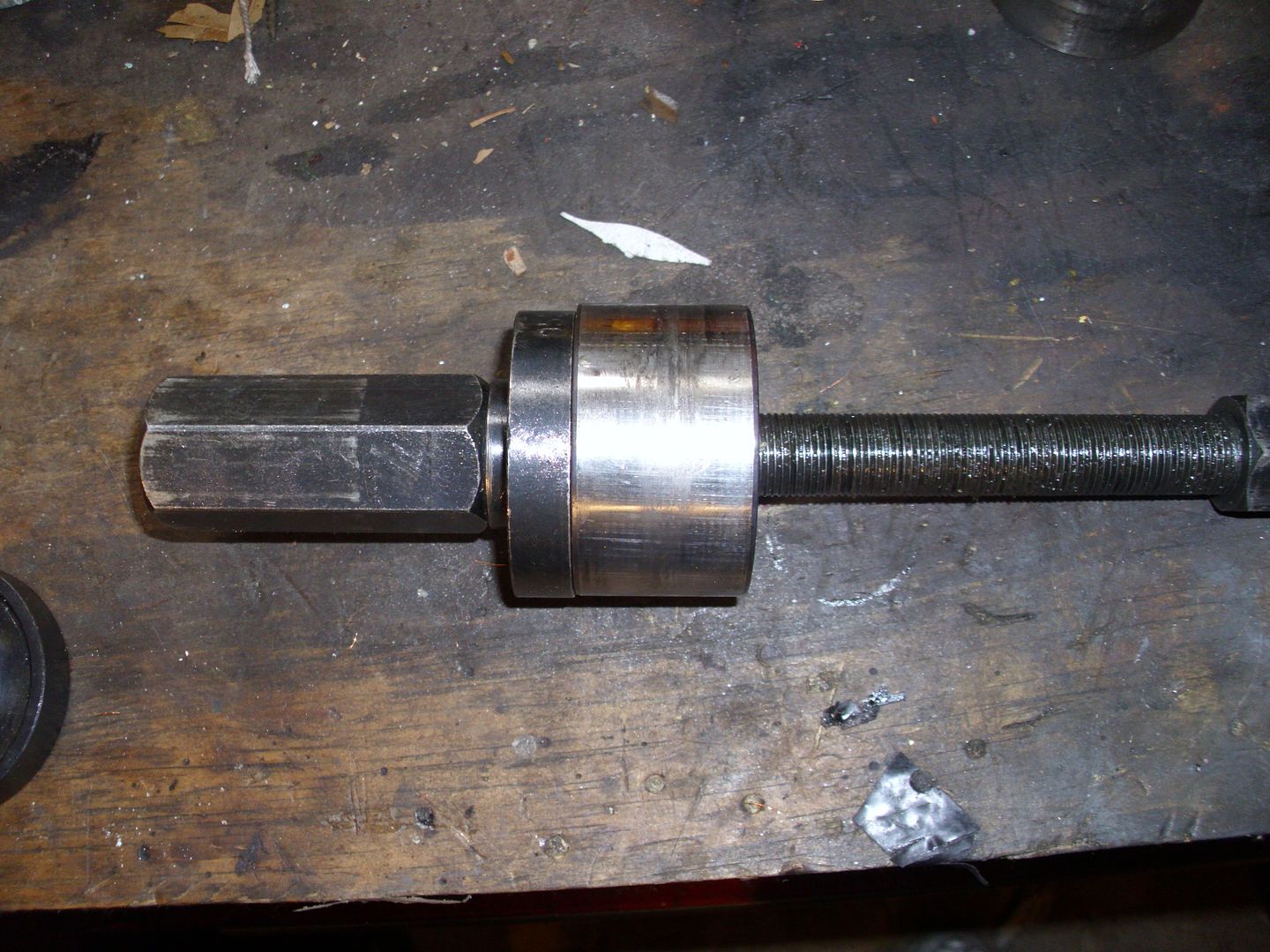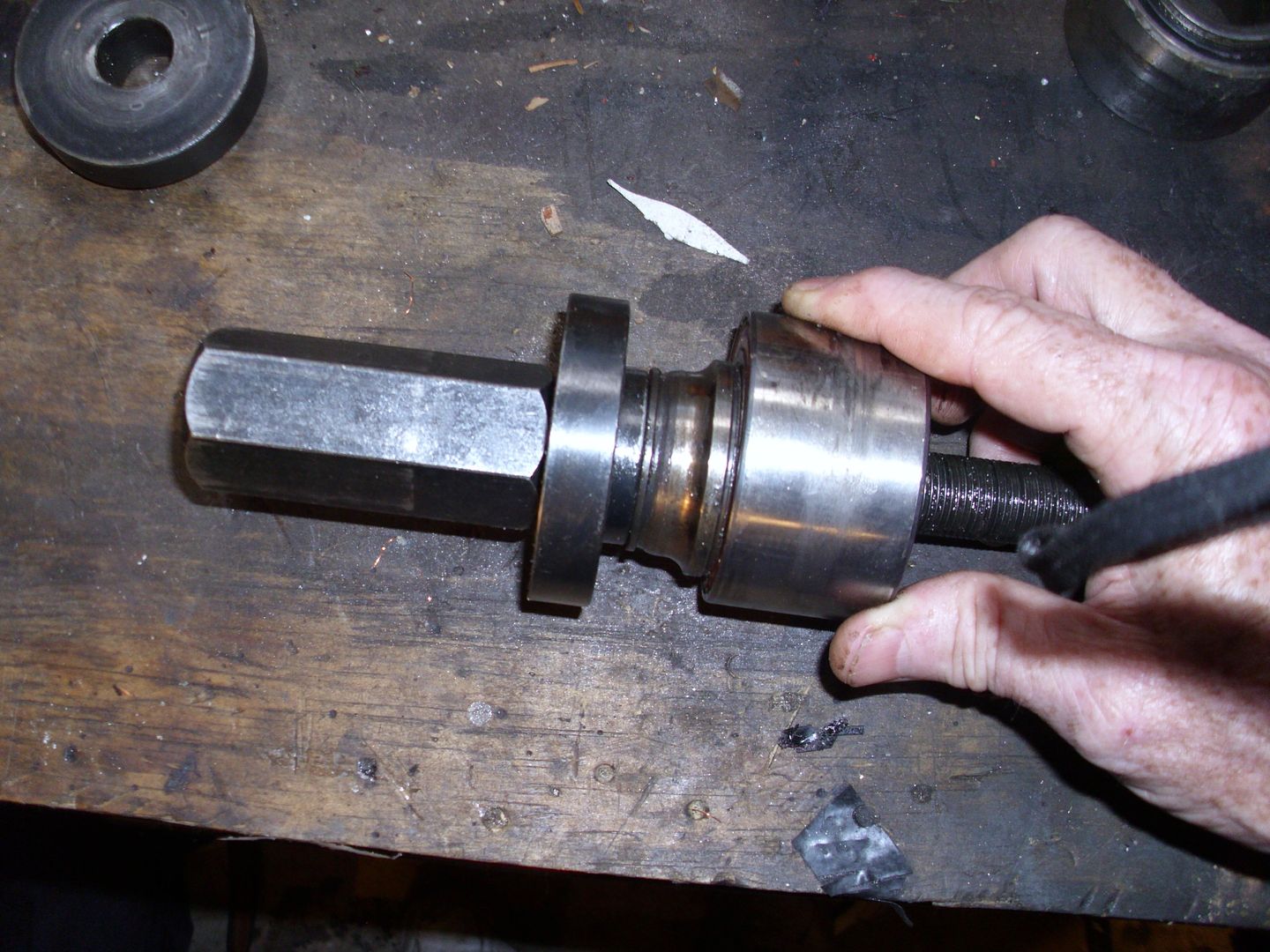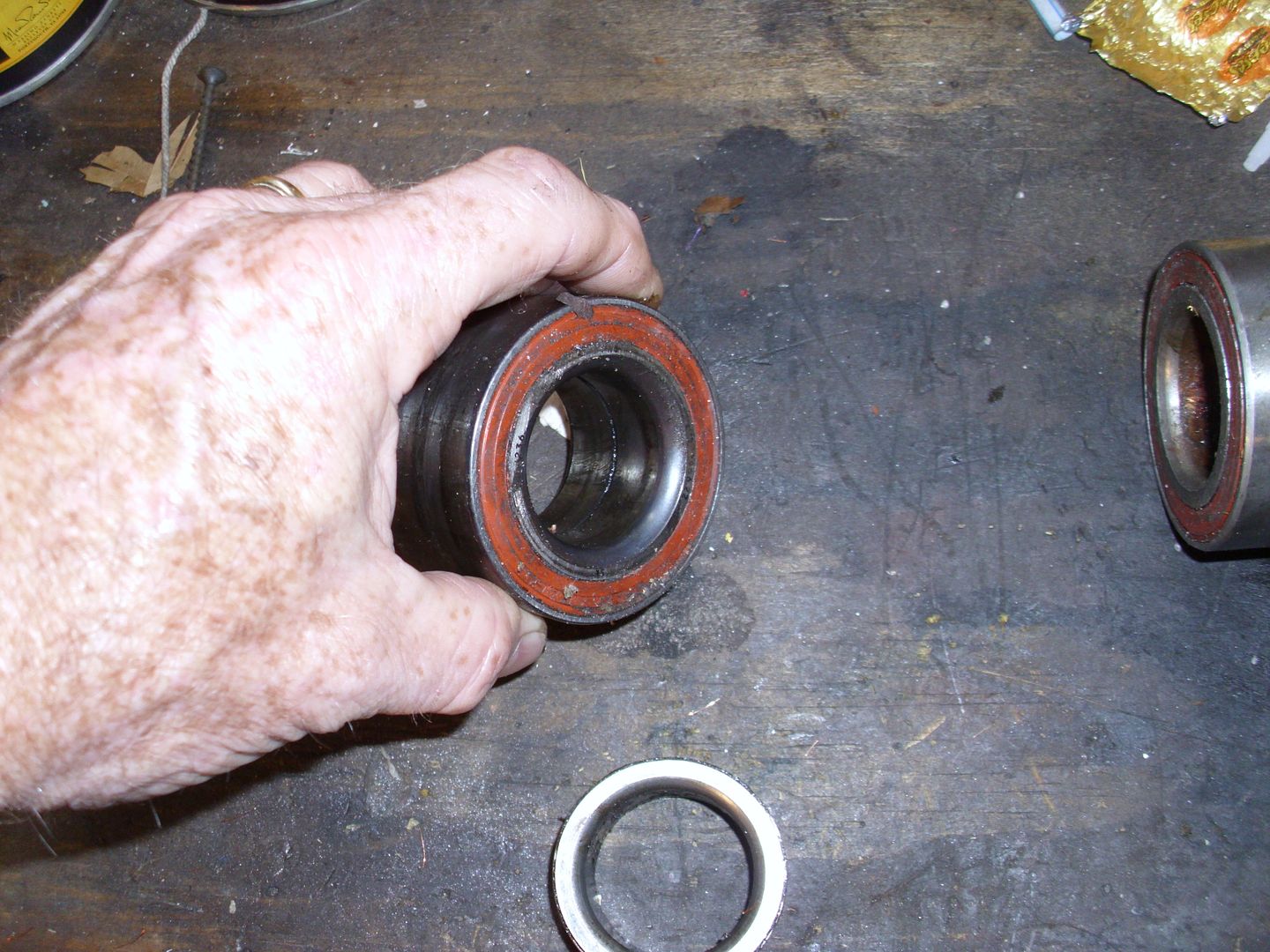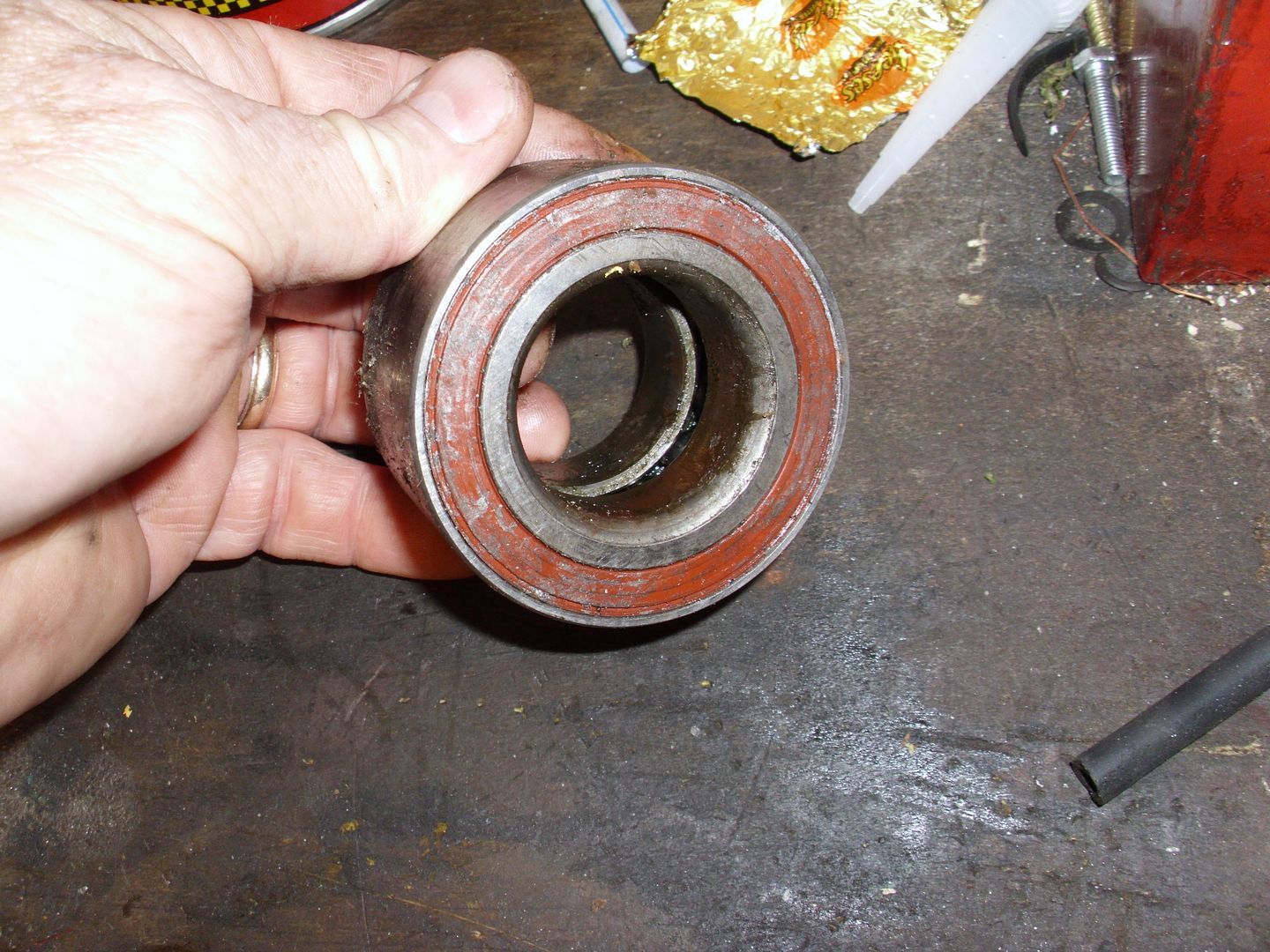gearbox bearing noise
Posted
#1588603
(In Topic #215745)
Settling In


need a replacement gearbox for mk1 golf gti 1.8
Posted
Local Hero

When do you get the bearing noise?
1988 Mk1 Golf GTi Cabriolet 1.8cc DX, K-jet. Daily drive. 317,000 miles and counting
1978 Mk1 Scirocco GLS 1.6cc FR, Webber carb. Weekend toy.
1978 Mk1 Scirocco GLS 1.6cc FR, Webber carb. Weekend toy.
Posted
Settling In


Posted
Moderator



The only reason I ask is that we have had problems with the cir clips for the bearings being a little bit too big and catching on the part of the drive shaft ends.
The other possibility is that the thrust bearing has gone. Does it sound different on tick over when you out in the clutch?
If the gear box has gone then pop down the scrap yard and yank one out of a mk3 golf and swap them over. They also used the 020 and 02A boxes.
A mate of mine has a couple for sale down here in Cornwall but the transport would probably be a bit pricey!
Ian
Posted
Settling In


Posted
Local Hero

Do you know the gearbox code?
Does the gearbox noise change if you take the car out of gear when moving, coast along to hear if the noise goes away?
Very good website on gearboxes.
Welcome to BrokeVW.com
Just because bearings etc are new does not always mean they are good, front bearings need to be pressed in carefully, if done wrong you can wreck the bearing. Easy way to check if it is a wheel bearing is does the noise stop if turning, some good left and right bends on a fast road are an easy way to see if the noise stops.
Are the hub nuts done up to the right torque?
1988 Mk1 Golf GTi Cabriolet 1.8cc DX, K-jet. Daily drive. 317,000 miles and counting
1978 Mk1 Scirocco GLS 1.6cc FR, Webber carb. Weekend toy.
1978 Mk1 Scirocco GLS 1.6cc FR, Webber carb. Weekend toy.
Posted
Settling In


 Last edit: by nigelmc99
Last edit: by nigelmc99
Posted
Old Timer


Mars red 1.8 GTI tintop now MOT'd and on the road!
http://vwgolfmk1.org.uk/forum/index.php?page=topicview&id=projects%2Fyour-mk1-golfs_2%2Fwent-to-look-at-a-golf&kfs79=150
http://vwgolfmk1.org.uk/forum/index.php?page=topicview&id=projects%2Fyour-mk1-golfs_2%2Fwent-to-look-at-a-golf&kfs79=150
Posted
Moderator



Posted
Local Hero

borednow said
Front hub nuts are around 238lb ft if i remember correctly.
Please check in your Haynes manual; though!
The front axle nuts are 175 ft/lbs 240Nm
There is the SMS self machining syndrome
the noise getting louder at rolling per speed could be the
wheel bearings, as if the pre-load isn't done right they will go south on you in as little as 500 km.
Replacing the front wheel bearing can be a dauntless task, Ron has a good write up on it for on the car. http://reflectionsands…com/front-wheel-bearings/
How ever there are things that are confusing to myself and others over the many write-up's that are out there.
Lets see if I can try to set the story a little straighter.
The Front Wheel bearing is a 3 part bearing.
The outer race that fits in to the Spindle.
The Inner Race has 2 pieces or is split in the middle.
Now I am not going to bother about there are the bearings the inner cage, and the 2 grease seals..

What I am going to show you is what they mean by Directional and Pre-load….
That term PRE-LOAD is a pain in the ass.. it has always bothered me…
When you look at the bearing there is a rounded edge, and a cut or sharp edge.
This is what they mean by directional.
You want the rounded edge to be inserted for the direction that you are going to press.
If you are pressing the bearing from the front or rear, you want the rounded end pointing in to the spindle, the sharp edge pointing out side.
When Ron says Grease the Screw for your press, he means GREASE IT. It will ease your pain.
What I do, is to place one of the Snap Rings in the grove, Channel-Lock 927 Snap ring pliers make quick work out of the snap rings.
Clean and grease the inner spindle. I use 600 grit wet/dry with oil to polish the inside.
Grease the bearing exterior.
Place the rounded edge of the bearing in to the spindle opposite side of the snap-ring, assemble your press, and screw it in until it stops and you can put any more umph in to it.

Remove your press. You will see that the bearing is firmly against the snap ring.
Pressing the outer bearing you have to support the outter ring of the bearing, and the rounded edge of the bearing goes in.

Now Place the other snap-ring in on the opposite side. I coat the snap ring with Never-sieze in the grove more later on this.
Now if you have the inner race from your old bearing where you had to separate it from the hub, this is a really special tool for you to use now.
Clean your hub with sand paper and oil, wipe clean and then lightly grease.
Lightly Grease the inner race of your bearing.
This is the PRELOAD>>>>>>>>>>>>>
Since the outer race of the bearing is held in check by the 2 snap rings, it won't move about.
What will move is the inner bearing, as it will try to separate when you press the Hub into the bearing…which is a no-no.
You want the new hub inserted in the spindles new bearing. You want your press plate and re-greased screw through the hub and bearing. You place the old inner race FACE side to Face side of the back side of your new bearings inner race, using your adapters against that inner bearing as you tighten the assembly center the hub. As you re-tightening it, you want to make sure that the old inner race is against the new inner race and fully centered….. This will force the new inner bearing to stay firmly together as your are
pressing the HUB in to the inner bearing, If you don't do this, then the bearing can slightly separate and you will be replacing it in a couple of thousand miles.
Supporting the inner Race to maintain pre-load.

Inner Bearing race together, Pre-Load

Inner Bearing race separated: no pre-load

This is the Magic PRELOAD. This is what it is all about, Keeping the inner RACE together as the HUB is inserted or pressed. Once the HUB is fully inserted, you are done….
The Preload term for some is a magic word… In reality you don't need to worry about the outer race as it is bound, but you can move the inner bearing and stoping that is essential to long term viability of the new Bearing.
I suppose if they said as you are pressing in the hub, you need to support the inner race firmly so it can't separate would of been nicer to the masses…..
If you move the car with the Axles removed, you can cause the pre-load to move, you ca't see it because of the Hub, but ut can happen.
I am not saying that you can't Press it back to regain it, but be warned that usually the preload is broken and the bearings can run out of position ruining the bearing. I suspect that you could see if it has moved by gauging the amount of the hub that is sticking through the inside
on the engine side of the knuckle.
Now on to those Spring-Clips. While removing a bearing the other day on one that I assume was OEM still or replaced by one of the previous owners, I had to fight the clip. I couldn't get it to budge at all it was frozen in to the groove…
What I did was to spray the clip with Tri-flow, and PB-Blaster… I let it work. After a 15 minute break, I used a small Cold-Chisel to smack the Snap-Ring against the edge of the old bearing.
After a few circles of smacking, I took a 1/4 punch and started to tap-tap-tap against each ear.
Once the ear started to move, I tapped-tapped-tapped the opposite ear till it to moved. Then I could take the Snap-Ring pliers and remove it.
I cleaned and polished the grove a bit. Sanded the snap ring. I have always coated those with Never-Sieze, but this was about the only thing on my car I hadn't replaced as of yet.
I hope that i have cleared up this Pre-Load business, which is just saying to apply pressure to the inner race from the rear as you are pressing in the hub from the front.
Tip, you don't need to remove the dust shield.
Tip Re-Grease the pressing SCREW for each use.
Tip, replace the Brake Caliper and insert all 4 lug bolts tight into the hub. You can then use a screwdriver in the vented fins locked against the caliper to torque the axle nut… If you don't use the lugs tight, you will snap the set screw that holds the rotor on.
Tip Once the car is down, you can re-torque the axle, but you will find that it is probably already there correctly,,, Torquing it without the weight of the car on the axle ensures full correct torque on the nut.
To get a list of torque values on the car see www.cabby-info.com
What do Divorces, Great Coffee, and Car Electrics all have in common?
They all start with GOOD Grounds.
Where are my DIY Links?
They all start with GOOD Grounds.
Where are my DIY Links?
Posted
Settling In


Posted
Local Hero

Good to hear it's sorted.
1988 Mk1 Golf GTi Cabriolet 1.8cc DX, K-jet. Daily drive. 317,000 miles and counting
1978 Mk1 Scirocco GLS 1.6cc FR, Webber carb. Weekend toy.
1978 Mk1 Scirocco GLS 1.6cc FR, Webber carb. Weekend toy.
0 guests and 0 members have just viewed this: None.








